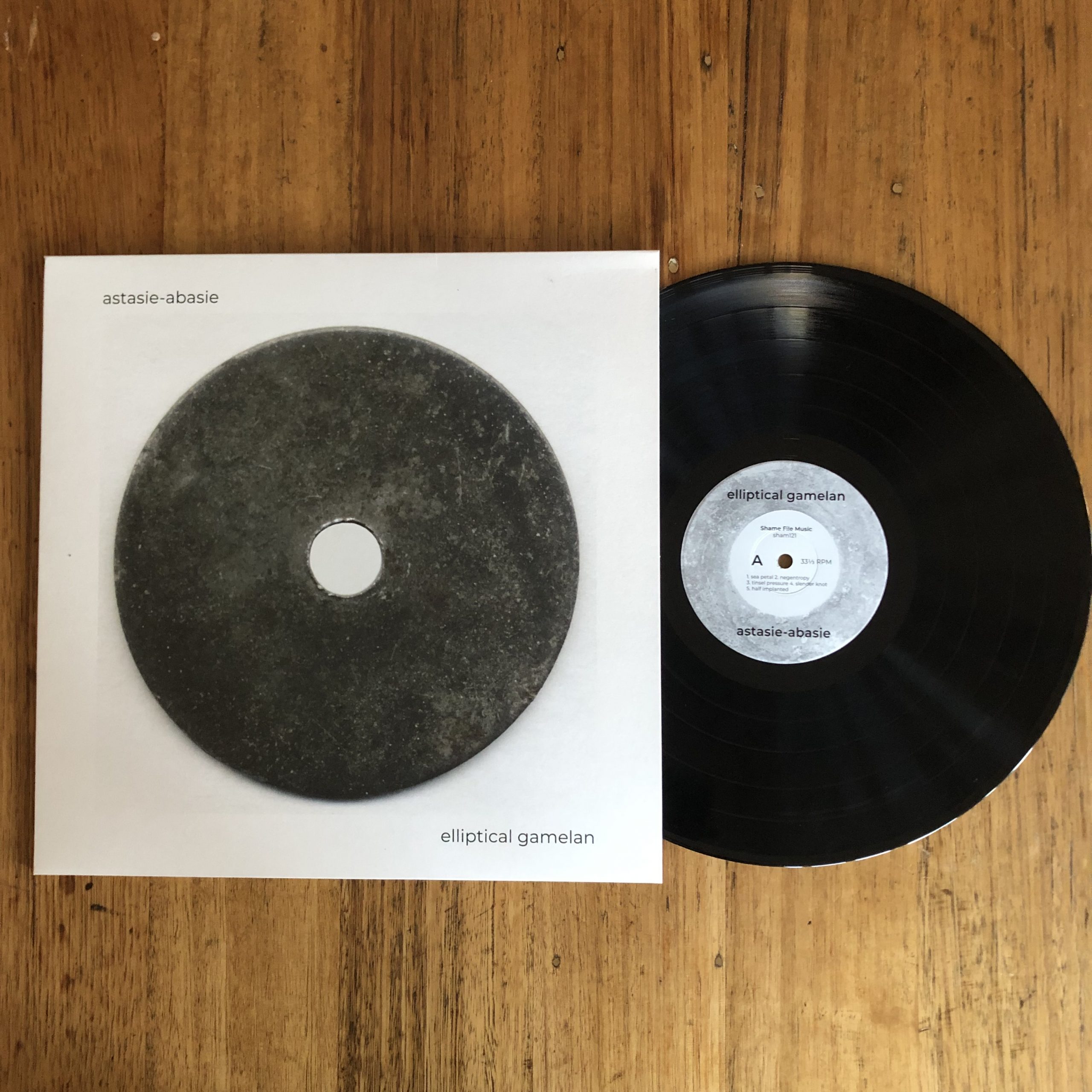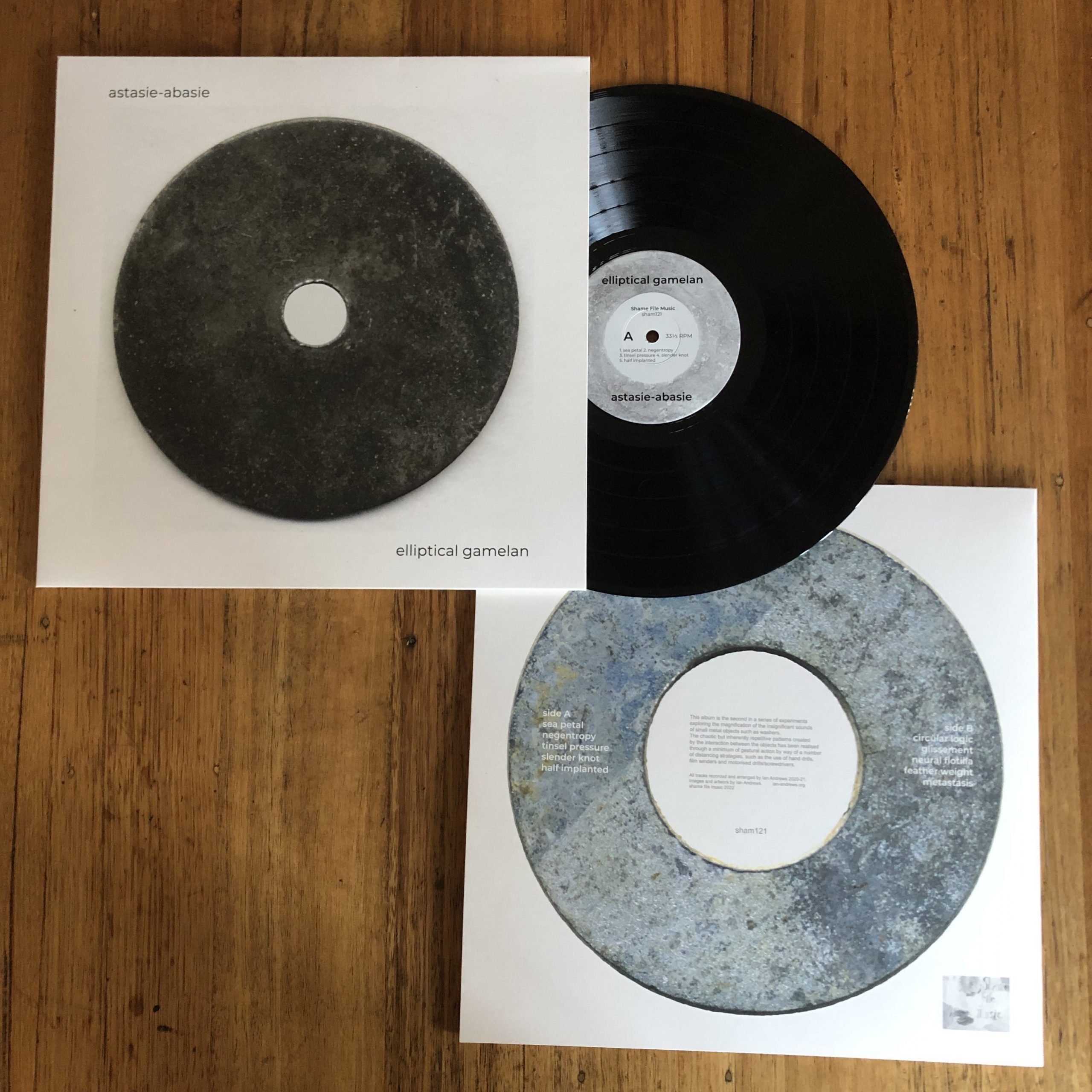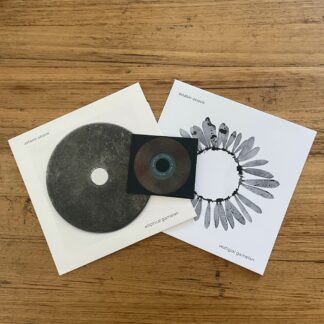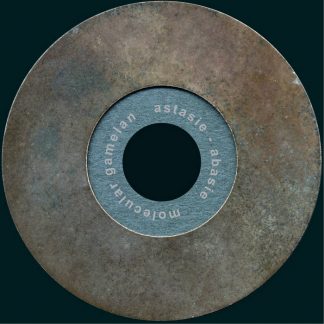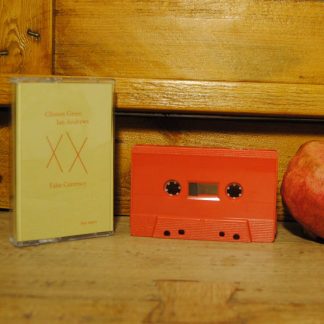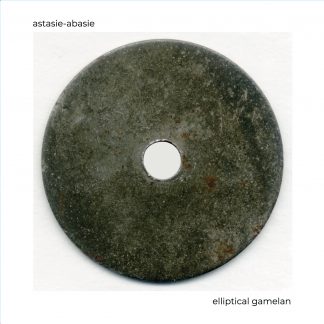Description
This album is the second in a series of experiments exploring the magnification of the insignificant sounds of small metal objects such as washers.
The chaotic but inherently repetitive patterns created by the interaction between the objects has been realised through a minimum of gestural action by way of a number of distancing strategies, such as the use of hand drills, film winders and motorised drills/screwdrivers.
Limited edition of 150 vinyl records, pressed at Melbourne’s Program Records in full-colour reverse board sleeve.
Astasie-abasie is a project of Ian Andrews which evolved out of a long running performance collaboration with Garry Bradbury. The project focuses on the amplification of small sounds (following the approach of John Cage, Gordon Mumma and David Tudor) through the capture of sounds generated by small objects by way of contact microphones, home constructed cartridges, miniature piezo microphones and conventional microphones. Various devices are used as constraints in order to distance any performing gesture of the artist from the compositional process. The compositional process is, in this sense, aleatory and close to automatic. Much like field recording, sounds are found rather than performed or manipulated. Modified, or ‘prepared’ turntables are often used to bring about the sounds, after which any editing of the material is kept to a minimum. “Elliptical Gamelan” is the follow-up album from “Molecular Gamelan” (2021,sham115).
Ian Andrews works across a number of disciplines including film and video, sculpture, installation and collage, poetry and writing, in order to explore questions relating to utopia and modernism, technologies and the post-human. The work attempts—via a strategy of deconstruction and collage, and the critical juxtaposition of appropriated materials—to locate the point of fracture in discourses of power and discursive regimes, and put into question the organising structures, and break the syntax of the accepted sedimented frameworks that keep thought rigid and ultimately hold us to ransom. His contribution to Australian experimental music reaches back to the early 1980s, including projects like The Horse He’s Sick, Kurt Volentine, Cut with the Kitchen Knife and countless others.
“Many little sounds are working together randomly or, rather, not working together. Think of the music as sitting on your front porch (I bet not many readers have those), and there is not one wind-chime but twenty. Different tunings, sizes and speeds make them all sound different. This makes it hard for the listener to focus on a single sound. It is, of course, not necessary to do that, to concentrate on a single sound, as you could also enjoy the overall nature of the music. As I wrote before, the music has a zen-like quality, and that is what we have here again. I’d say ten pieces are all the same and yet all different…This is some very relaxing music!” – Vital Weekly 1354

